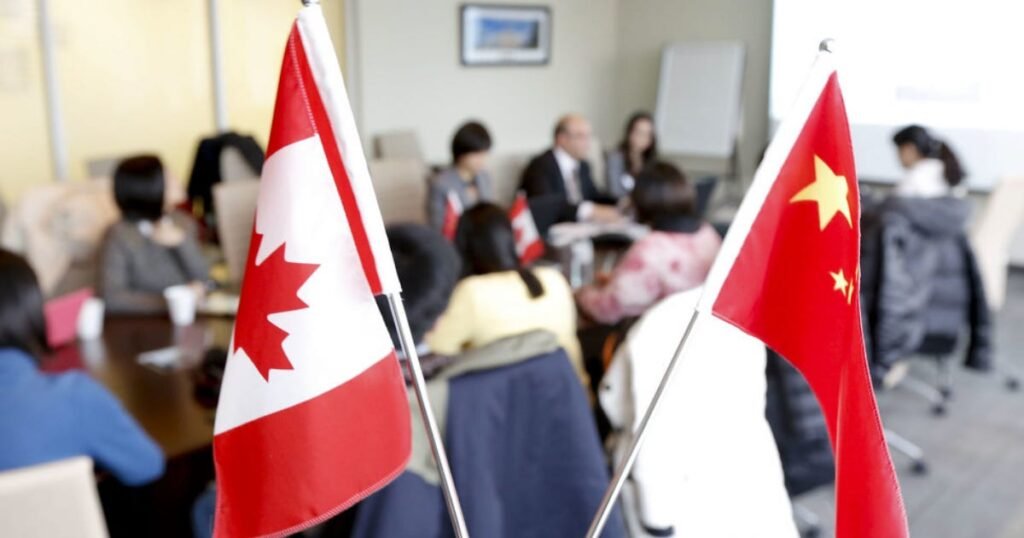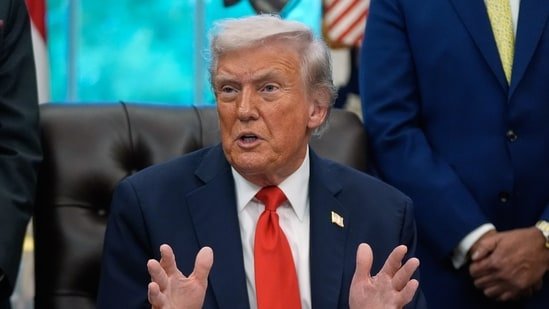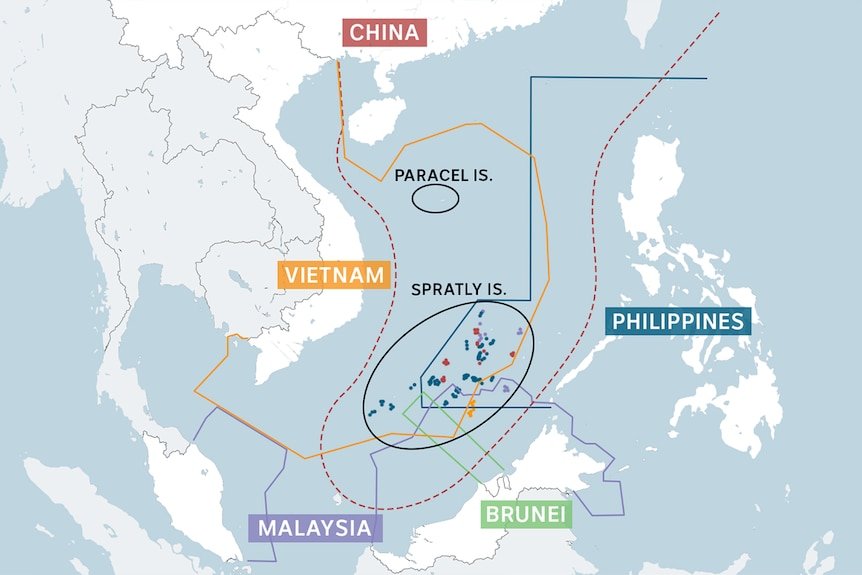In a fiery statement from the White House, Trump warned that China has “taken advantage of America for too long”, declaring that unless a new trade deal is reached, the US will respond with its “toughest economic measures yet.” This latest move underscores Trump’s long-standing belief that the United States must rebalance its trade relationship with China — a message that resonates with his voter base but rattles investors.
The tariff threat, which could impact hundreds of billions of dollars’ worth of goods, immediately triggered a sell-off in US stocks. The Dow Jones Industrial Average tumbled nearly 900 points, while the S&P 500 and Nasdaq Composite also slumped as traders weighed the risk of escalating tensions between the world’s two largest economies.
Analysts say a 155% tariff rate would be one of the harshest trade penalties ever imposed on a major trading partner. It could drive up costs for American businesses, increase consumer prices, and disrupt global supply chains that are already strained from years of geopolitical uncertainty.
China, for its part, has begun preparing countermeasures. Beijing officials hinted at tightening export restrictions on rare earth materials, a critical component in electric vehicles and defense technologies — signaling that they won’t back down easily.

Live Events
Meanwhile, US manufacturers and tech giants are caught in the crossfire. Companies such as Tesla, Nvidia, and Apple could face higher production costs and supply delays, further adding pressure to an already fragile market.A 155% tariff on Chinese imports would significantly increase the cost of goods coming into the U.S. from China, which would likely lead to higher prices for U.S. consumers. Importers and retailers facing much higher input costs would pass on part or all of these costs as price increases on everything from electronics and clothing to components used in manufacturing and tech products. This steep tariff level far exceeds typical duties and could drastically raise consumer prices on Chinese-made goods and products incorporating Chinese parts.Historical and recent data from previous tariff rounds show that tariffs cause upward pressure on consumer prices. Studies indicate that U.S. companies often absorb some tariff costs initially, but price increases for consumers still follow, especially for goods with few domestic substitutes. For example, previous tariff increases pushed import prices notably higher, contributing to inflation pressures estimated at around 0.75 percentage points added to core inflation and potentially up to 1 percentage point annually in some forecasts. This leads to broader inflationary ripple effects in the economy.
The 155% tariff threat is also likely to disrupt supply chains, forcing companies to reengineer or relocate production, which usually adds to costs and eventually consumer prices. Since China is a major source of critical minerals, components, and consumer products, tariffs at this scale could cause sharp price spikes and shortages for some goods.
Historically, markets have reacted very negatively immediately following big tariff announcements, often with sharp sell-offs and periods of high volatility. For example, after President Trump’s announcement of reciprocal tariffs in April 2025, the S&P 500 dropped by more than 12% over seven days, marking one of the steepest declines outside of major crises like the COVID-19 pandemic and the 2008 subprime mortgage crash.
This initial market shock was accompanied by rising bond yields and a loss of confidence among investors globally, leading to widespread sell-offs in stocks and other assets.
However, markets have also shown resilience after the initial shock. When Trump announced a 90-day pause on some tariffs shortly after the sharp decline, the S&P 500 experienced one of its best single-day gains in nearly 17 years, surging by 9.5%. This rally reflected investor optimism that tensions might ease and trade negotiations could proceed.
The sectors that would be hardest hit by a steep tariff like the proposed 155% on Chinese imports are those heavily reliant on imports from China and with low margins or limited ability to shift supply chains quickly. Key sectors include:
- Consumer Goods and Retailers: These companies face direct price increases on imported products such as electronics, apparel, footwear, and household items. Importers often have slimmer margins and pass cost increases to consumers, driving retail price hikes. Apparel, footwear, and textiles are especially vulnerable, with price increases in the range of 20-40% historically observed under high tariffs.
- Technology and Electronics: Many tech products and components are sourced from China, including semiconductors and rare earth minerals. Tariffs raise costs for manufacturers and suppliers, squeezing margins and raising prices of devices and electronics.
- Automotive and Aerospace: These industries rely on complex global supply chains with many parts sourced from China. High tariffs lead to increased production costs, delayed supply chains, and disrupt manufacturing schedules. Components and raw materials will see price hikes, impacting finished vehicles and aircraft prices.
- Metals and Machinery: Steel, aluminum, copper, and machinery sectors face high tariffs, affecting costs for construction, manufacturing, and defense industries. Pricing pressures escalate as imports become more expensive.
- Agriculture and Food Processing: Some agricultural inputs, processing equipment, and packaging materials come from China. Tariffs translate into higher costs for farmers and food producers, with potential consumer price increases.
History shows that sectors exporting consumer goods and labor-intensive products to tariff-imposing countries (like the U.S.) face the blunt of tariff impacts, with export volume declines and revenue setbacks as companies face a competitive disadvantage.
Over the following weeks and months, markets gradually recovered as further tariff exemptions were granted and dialogue between the US and China increased, although uncertainty and volatility remained.
Investors are now anxiously watching the November 1 deadline, which many fear could mark the beginning of a new wave of market turbulence. Whether this standoff leads to a negotiated deal or a financial shock, one thing is certain — the stakes have never been higher for the US economy and global markets.
Why is Trump threatening 155% tariffs on China?
President Donald Trump has escalated trade tensions, threatening a 155% tariff on Chinese imports starting November 1, 2025. This move comes after China expanded export controls on rare earths, vital for U.S. tech and defense industries. Trump also signaled a 100% tariff on Chinese goods and tighter export controls on critical software, calling China’s trade tactics “extraordinarily aggressive.”
Despite the alarm, Trump hinted at possible negotiations and a planned visit to China in early 2026. Some analysts are cautiously optimistic, coining the term “TACO” (Trump Always Chickens Out) to suggest he may ease the tariff threat to avoid further market turmoil.
Investors are now watching closely. While the 155% tariff threat has intensified volatility, whether it triggers a November market crash remains uncertain.
The move targets a wide range of goods, from electronics to machinery, and could significantly affect supply chains between the US and China. Trump emphasizes that unless China agrees to the terms, these tariffs will take effect immediately, escalating trade pressure.
Experts say such a high tariff rate is unprecedented and could have far-reaching consequences. It is designed to push China to act, but it also introduces uncertainty for US businesses that rely on Chinese imports. Investors and market watchers are paying close attention to see how China responds and whether negotiations can prevent further escalation.
Markets reacted sharply. On October 10, 2025, the S&P 500 fell 2.7%, the Dow dropped 878 points (1.9%), and the Nasdaq slid 3.6%, erasing a month’s gains and sparking fears of an economic slowdown. Major tech stocks, including Amazon, Nvidia, and Tesla, were among the hardest hit.
How are US markets reacting to the tariff threat?
Following President Trump’s announcement, US stock markets have shown signs of volatility. Major indices like the Dow Jones, S&P 500, and Nasdaq experienced sharp declines in anticipation of the economic fallout from the tariffs. Technology stocks, in particular, have been hit hard.
For example, companies that rely heavily on Chinese manufacturing and components, such as Tesla, Amazon, and Nvidia, are seeing increased pressure on their stock prices. The uncertainty surrounding supply chains and potential price hikes for consumers has triggered cautious investor behavior.
Market analysts warn that continued escalation could affect market confidence even more. If Trump moves forward with the tariffs, US companies may face higher costs, and investors could respond by reducing their exposure to stocks with strong China ties. While a full-scale market crash is not guaranteed, the risk of short-term turbulence is significant.
What is China doing in response to Trump’s tariffs?
China has responded by tightening export controls on critical materials, particularly rare earth elements used in electric vehicles, aircraft engines, and advanced technologies. These materials are essential for global manufacturing, and China controls more than 90% of the global supply.
By restricting exports, China is signaling that it will not easily yield to the US pressure. This move could further complicate supply chains and raise costs for US companies relying on Chinese components.
China’s response highlights the high stakes of the trade dispute. If either side escalates further, it could affect not just trade but global economic stability. Analysts warn that continued tensions may lead to delays in production, higher consumer prices, and increased uncertainty for investors.
What could be the economic impact of the tariffs?
The proposed 155% tariffs could disrupt the global supply chain, particularly for industries dependent on Chinese imports. Sectors such as technology, automotive, and electronics may face higher costs for materials and components.
Consumers could also feel the impact. Higher import costs could lead to price increases on products ranging from smartphones to electric cars. This could, in turn, affect household budgets and overall consumer spending, which drives a significant portion of the US economy.
Moreover, uncertainty in the markets may reduce investor confidence. Companies may delay expansions or investments, leading to slower economic growth. Even if the tariffs are not fully implemented, the fear of potential escalation can cause short-term market instability.
Could these tariffs trigger a market crash in November?
While a market crash is not certain, the combination of escalating tariffs, supply chain disruptions, and investor anxiety increases the risk of a sharp downturn. Historical trends suggest that sudden trade policy announcements can trigger rapid market reactions.
Investors are particularly wary of November 1, 2025, the deadline for the tariffs. If China does not agree to terms and Trump enforces the tariffs, markets could see rapid sell-offs. On the other hand, successful negotiations could ease fears and stabilize markets.
The uncertainty itself is a major factor. Traders and financial analysts are closely watching developments. Many recommend caution and diversification, as portfolios heavily exposed to technology or China-related trade could face volatility.
What should businesses and consumers do now?
Businesses should review supply chains and consider alternative sourcing strategies. Companies relying on Chinese imports may need contingency plans to mitigate potential cost increases. Keeping an eye on trade developments and maintaining flexible contracts can help manage risk.
Consumers may see price fluctuations in goods that depend on Chinese imports. Planning purchases and staying informed about product price trends could help manage household expenses during this period of uncertainty.
Staying informed is key for both investors and businesses. Regularly monitoring news, market updates, and trade negotiations can help individuals and companies make better decisions.
President Trump’s 155% tariff threat has added a new layer of uncertainty to global markets. While negotiations could resolve the dispute, the risks are real. The coming weeks leading up to November 1, 2025, will be critical in determining whether markets stabilize or experience further volatility.
Investors, businesses, and consumers alike should prepare for potential market fluctuations. Staying informed, considering alternative strategies, and monitoring developments can help navigate this uncertain period.







